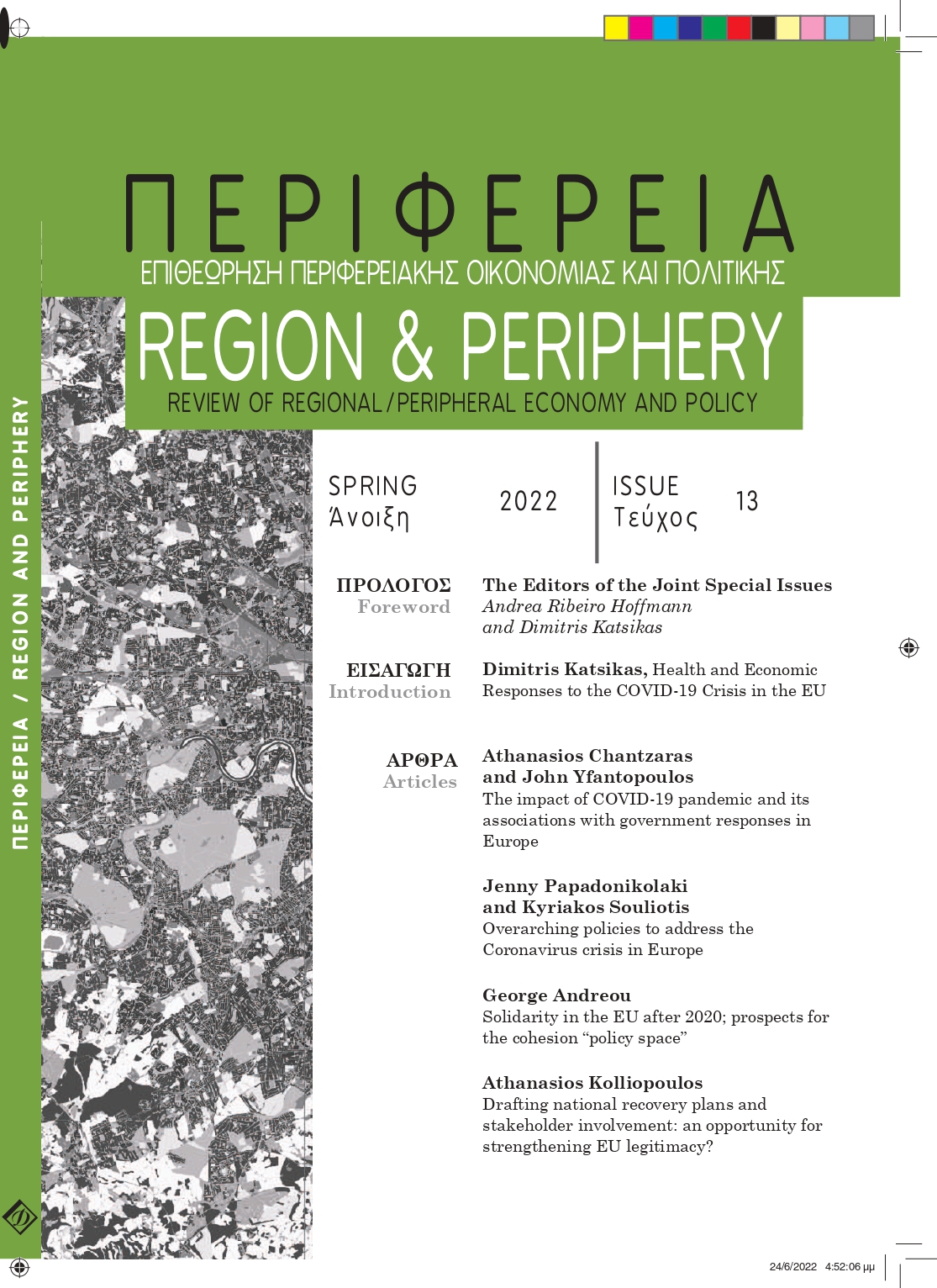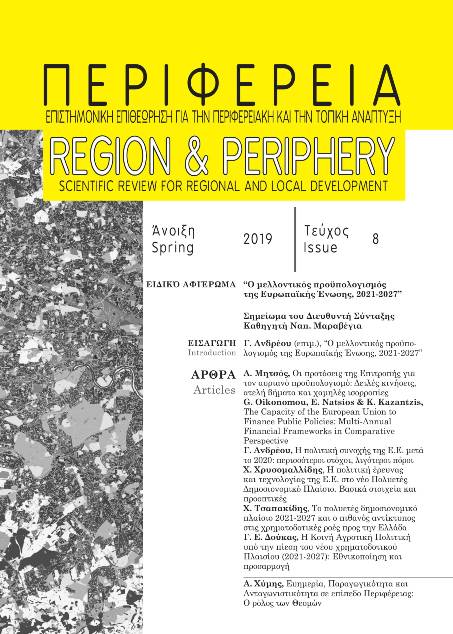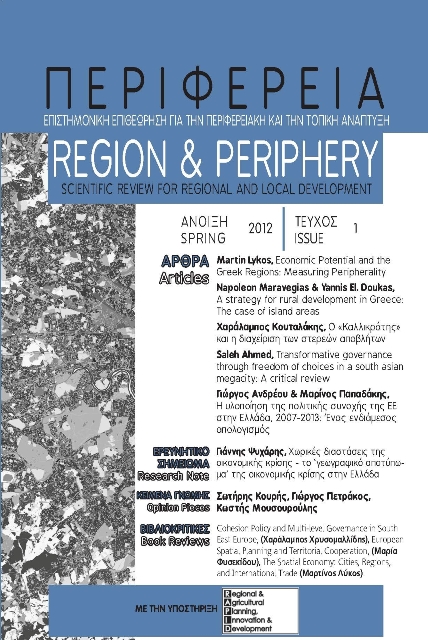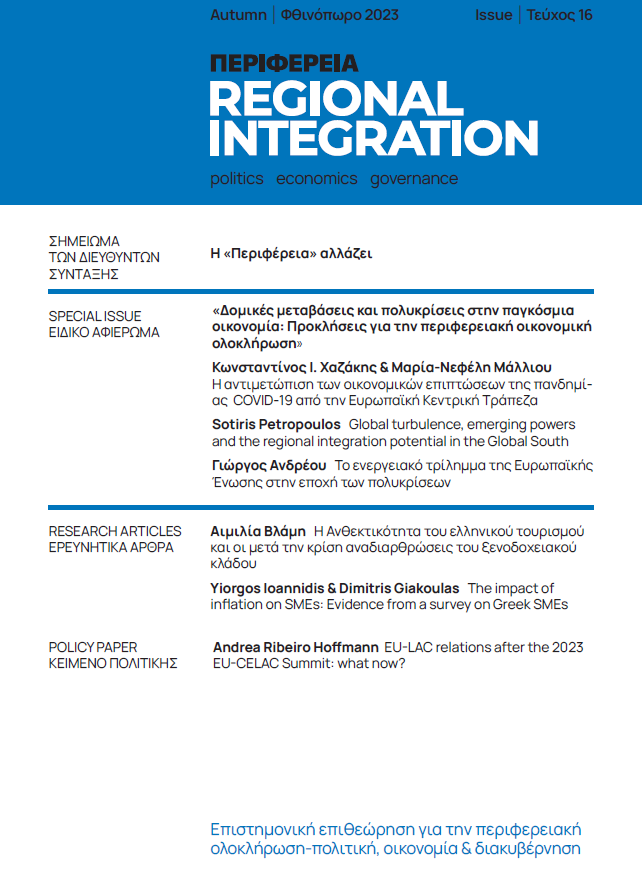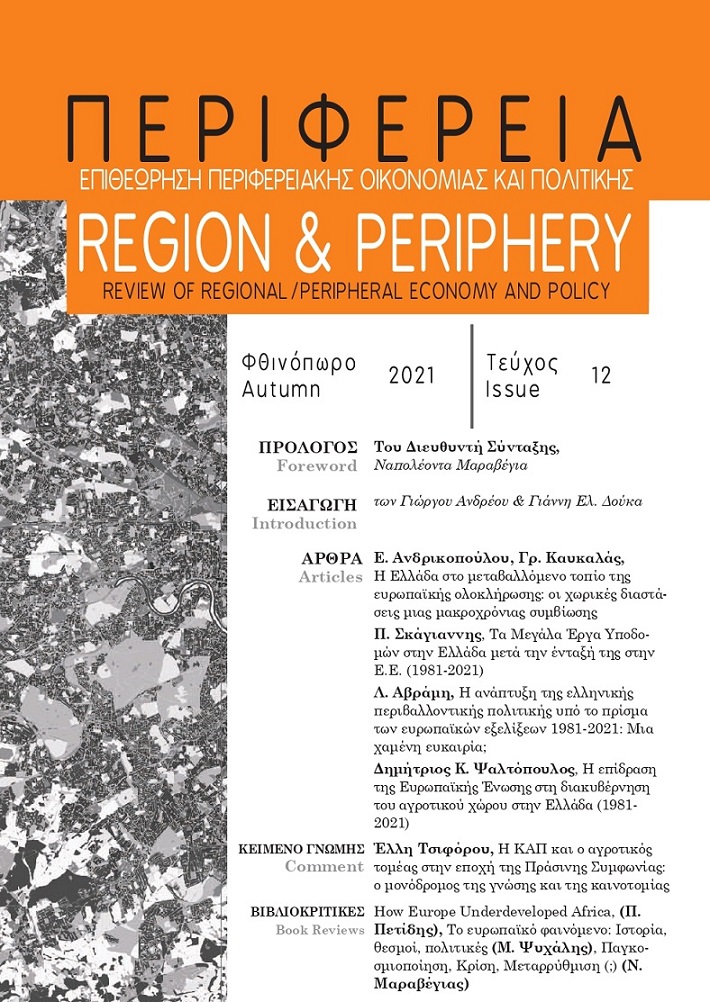Solidarity in the EU after 2020; prospects for the cohesion “policy space"
Abstract
In 2020, the EU established the “Recovery and Resilience Facility” (RRF), which aims at promoting its economic, social, and territorial cohesion. This development has had a significant impact on the institutional architecture of cohesion policy, which is widely viewed as the main “EU solidarity tool”. The goal of this paper is to map the institutional configuration of “old” and “new” funding programs devoted to the promotion of cohesion and solidarity in Europe through the lenses of public policy analysis and historical institutionalism. It is argued that despite its impressive redistributive impact in territorial terms, the new Facility does not represent a break from the past when it comes to the quality of its solidarity content. On top of that, by adding RRF in a “cohesion policy space” burdened with old and new policy goals and means and lacking a clear territorial and social focus, EU actors have further undermined both the coherence and the solidarity impact of “old” cohesion policy.
Article Details
- How to Cite
-
Andreou, G. (2022). Solidarity in the EU after 2020; prospects for the cohesion “policy space". Perifereia | Regional Integration: Politics, Economics, Governance, 13(13), 65–90. https://doi.org/10.12681/rp.30756
- Section
- Research Articles

This work is licensed under a Creative Commons Attribution-NonCommercial 4.0 International License.
Authors who publish with this journal agree to the following terms:
· Authors retain copyright and grant the journal right of first publication with the work simultaneously licensed under a Creative Commons Attribution Non-Commercial License that allows others to share the work with an acknowledgement of the work's authorship and initial publication in this journal.
· Authors are able to enter into separate, additional contractual arrangements for the non-exclusive distribution of the journal's published version of the work (e.g. post it to an institutional repository or publish it in a book), with an acknowledgement of its initial publication in this journal.
· Authors are permitted and encouraged to post their work online (preferably in institutional repositories or on their website) prior to and during the submission process, as it can lead to productive exchanges, as well as earlier and greater citation of published work.

